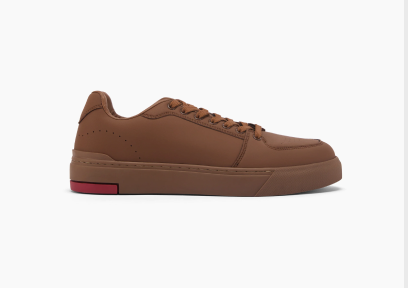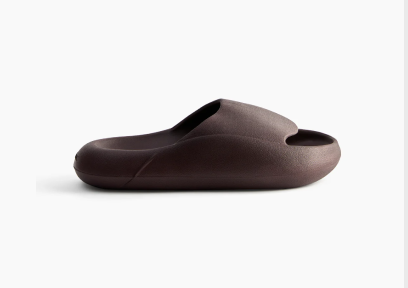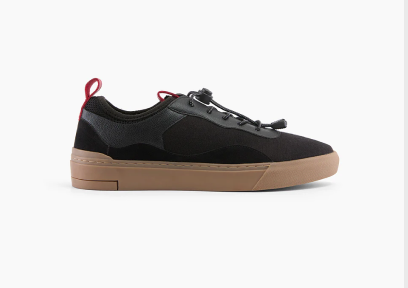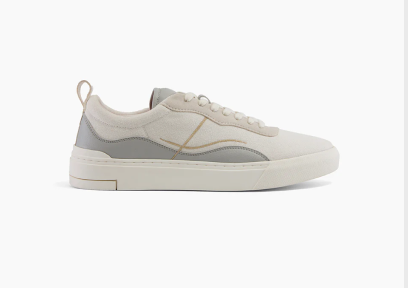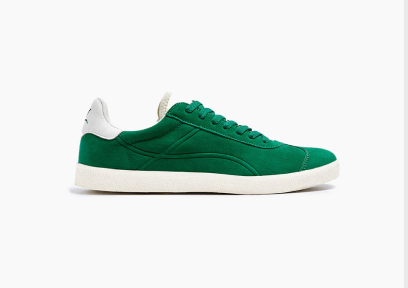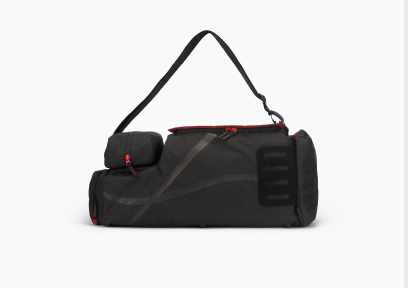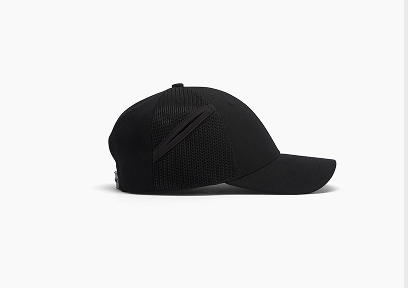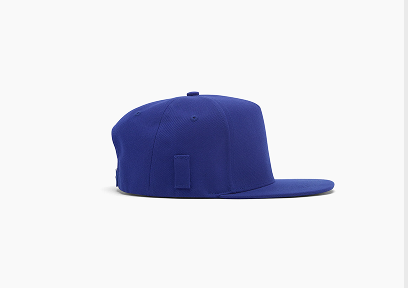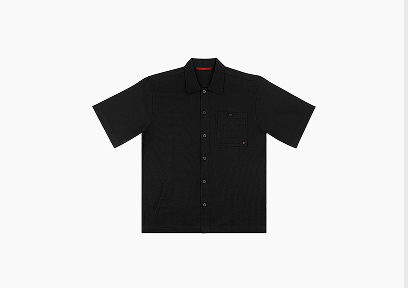High-Tops Vs Low-Tops: Which Sneaker Fits Your Style?

Sneakers are no longer confined to gym sessions or weekend errands—they're central to everyday fashion. But when you're choosing a pair, there's a clear fork in the road: high-tops vs low-tops. Each has its structure and purpose. While the look matters, your choice should also factor in how you move through your day.
In this guide, we shall expose the differences between high-top sneakers and low-top sneakers, looking closely at the many aspects. If you've ever stood frozen between two shelves of sneakers wondering which pair to grab, you're in the right place.
High-Tops vs Low-Tops: Quick Comparison
|
Feature |
High-Top Sneakers |
Low-Top Sneakers |
|
Ankle Coverage |
Extends above the ankle |
Cuts below the ankle |
|
Support Level |
Offers more ankle support |
Less support, more freedom |
|
Mobility |
Slightly restricted |
High range of motion |
|
Weight |
Heavier due to added structure |
Lightweight and breathable |
|
Best For |
Basketball, streetwear, and light outdoor use |
Running, walking, and daily casual wear |
|
Style Profile |
Bold, chunky silhouette |
Sleek, minimal aesthetic |
|
Injury Protection |
Some ankle protection, but it can restrict flow |
Allows muscle activation, less external guard |
|
Comfort Over Time |
Secure fit; may feel tight after long wear |
Flexible and easy on the feet |
|
Orthopedic Consideration |
Good after ankle sprain recovery |
Better for strengthening foot muscles |
What Defines a High-Top or Low-Top Sneaker?
High-top sneakers extend above the ankle. Think basketball legends or retro streetwear icons.
Low-top sneakers cut below the ankle, providing a more minimal profile and lightweight feel.
While they may appear as a stylistic choice on the surface, the real difference between high-tops vs low-tops lies in movement and ankle coverage.
Design Origins and Intent
High-top sneakers were originally designed for sports that involve rapid ankle movements, e.g., basketball. Covering the ankle gave players more structural control and reduced lateral sway. That said, some argue this support can be a double-edged sword. Restricting movement may compromise ankle strength over time.
Low-top sneakers, on the other hand, came out as general-purpose footwear. They're lighter, less restrictive, and allow greater ankle mobility. Runners, skaters, and fashion-forward city walkers prefer them. Moreover, it makes it easier when you need to clean the sneakers home.
High-Tops: Support Over Speed?
One of the main features of high-top sneakers is ankle support. Because they lace above the ankle bone, they naturally feel more secure. The added structure can prevent the risk of sprains.
However, some professionals believe the restriction caused by high-tops can limit natural foot movement and slow down reaction time. Overusing external ankle support might reduce the engagement of stabilising muscles, leaving ankles less prepared for impact in dynamic situations.
That said, high-top sneakers still dominate in sportswear where extra security is paramount.
Low-Tops: Freedom to Move
In contrast, low-top sneakers prioritise mobility. Their stripped-down silhouette makes them flexible. For runners, dancers, or even casual wearers, that freedom of movement can translate to better comfort and performance.
But they offer less ankle protection. On uneven ground or during quick lateral shifts, there's more risk of rolling an ankle. That’s why athletes wearing low-tops rely on stronger muscle conditioning around the ankle.
Still, the agility of low-top sneakers makes them the go-to for everyday wear.
Which One Is Safer?
There’s a common myth that high-tops are always the safer option. But studies have shown mixed results. Injury risks depend more on the user’s footwork, surface, and conditioning than on the shoe collar height.
In sports like basketball, where players land on unpredictable surfaces (like another player's foot), high-tops might reduce some damage. However, low-tops allow faster cuts and sharper lateral moves.
The bottom line is that neither is injury-proof. Proper warmups, a good fit, and strong supporting muscles play a bigger role in safety than the shoe type alone.
High-Tops vs Low-Tops: The Style Detail
Another step forward in understanding high-top sneakers vs low-top sneakers would be from the style perspective.
High-Top Style Appeal
- Chunkier silhouette.
- Better for layering with joggers, tapered jeans, or shorts.
- It adds visual weight to your lower half, which is good if you're styling oversized or bulkier upperwear.
- Works well with urban, throwback, or sport-driven fashion.
Low-Top Style Appeal
- Sleek and minimal.
- Pairs easily with slim jeans, chinos, and ankle-revealing styles.
- Lightweight and summer-ready.
- Blends effortlessly with both formal-casual hybrids and everyday basics.
Choosing between high-tops vs low-tops isn't just about function. It’s about the impression you want to create. High-tops grab attention; low-tops blend in smoothly.
Weight and Comfort
High-tops are built to secure. That means more material, heavier soles and tighter lace configurations. For some, it feels like a bonus. For others, the extra weight can feel like a burden.
Low-tops excel here. They're easier to pack, faster to put on, and more breathable in warm weather. Their featherweight build often makes them the smarter choice for daily errands or long days on your feet.
Athletic Applications: Which Is Better?
- Basketball: High-tops for ankle stability; low-tops for speed and responsiveness.
- Running: Always go with low-tops or dedicated running shoes.
- Skateboarding: Skaters often mix high-tops for ankle bruising protection and low-tops for board feel.
- Walking: Low-tops win for comfort and lightness.
- Hiking: Neither—opt for boots or trail shoes with technical outsoles.
Your movement matters. If you're stationary or shifting weight slowly, high-tops may suit. If agility is your game, low-tops could be a better match.
You may also like to read - Sneakers vs Athletic Shoes
Orthopaedic Perspective
When it comes to foot health, sneaker structure matters.
High-top sneakers add artificial support around the ankle. While that can be helpful after injury or during intense play, long-term reliance may reduce natural foot engagement. That said, people recovering from sprains or instability often feel more confident in high-tops due to the added protection.
Low-top sneakers allow your foot and ankle to operate more naturally. It can strengthen stabilising muscles and improve proprioception. The tradeoff? You’ll need better conditioning to stay injury-free.
If you're dealing with foot issues, consider talking to a specialist before locking in your high top vs low top sneakers decision.
Also check - Why Low-Top Sneakers Are Perfect for Casual Wear
Myths to Ditch
- “High-tops prevent all injuries” – No shoe does. Strength and form are better protectors.
- “Low-tops aren’t athletic” – Plenty of professionals wear them. It’s about how your body moves.
- “One is always better” – Your activity, fit, and style decide what works best, not the design alone.
Also check - types of caps for men
What Should You Look for When Buying High-Top Sneakers?
When choosing high-top sneakers, focus on ankle support, all-day comfort, and a secure fit around the collar. Also consider material quality and whether the design matches your everyday style and intended use.
What Should You Look for When Buying Low-Top Sneakers?
When buying low-top sneakers, prioritize lightweight comfort, flexibility, and breathability for easy movement. Make sure the fit supports your activity level and that the style works well for both casual and active wear.
So, Which One Should You Buy?
Ask yourself these questions:
- What do I need them for: sport, daily wear, or both?
- Do I prefer a lightweight feel or added security?
- What kind of outfits do I usually wear?
- Do I have any current or past ankle injuries?
If you’re into bold styling and structured support, go high-top. If you want flexibility, speed and easy everyday wear, a low-top is your go-to.
Read What to Look for When Buying Sneakers: A Guide to Finding the Perfect Fit.
FAQs
Are high-tops better for ankle injuries?
High-tops can offer additional support around the ankle during recovery phases, which may help stabilise the joint. However, they’re not a substitute for proper rehab exercises or strengthening routines that maintain long-term foot health.
Can low-top sneakers be worn for sports?
Absolutely. Many athletes prefer low-tops for the flexibility and freedom of movement they allow. As long as your ankle muscles are conditioned and the shoe fits well, low-tops can perform effectively in many sports.
Do high-top sneakers feel heavier than low-tops?
Yes, high-tops tend to be heavier due to the added material around the ankle. While some people appreciate the secure feel, others find the extra weight uncomfortable for extended walking or active use.
Which sneaker style suits casual everyday wear best?
Low-tops are generally better suited for casual, everyday use. Their lighter build, simple design, and ability to pair easily with a wide range of outfits make them a natural choice for daily comfort and style.
What's the difference between high-tops and basketball shoes?
High-tops refer to sneakers that extend above the ankle for style or added support, while basketball shoes are specifically designed for performance on the court, offering extra cushioning, traction, and ankle protection. Not all high-tops are basketball shoes, but many basketball shoes are high-tops.
Why are high-tops used for basketball?
High-tops are used in basketball because their extended ankle support helps prevent injuries during quick movements, jumps, and sudden direction changes. They also provide stability and cushioning, making them ideal for the high-impact demands of the game.
Are high-top sneakers comfortable?
High-top sneakers can be very comfortable, especially if they have cushioned insoles and supportive soles. Comfort depends on the shoe’s design and fit—well-made high-tops provide ankle support without restricting movement.
What should you look for when buying high-top sneakers?
When buying high-top sneakers, consider ankle support, comfort, fit around the collar, material quality, and how well the design matches your everyday style and intended use.
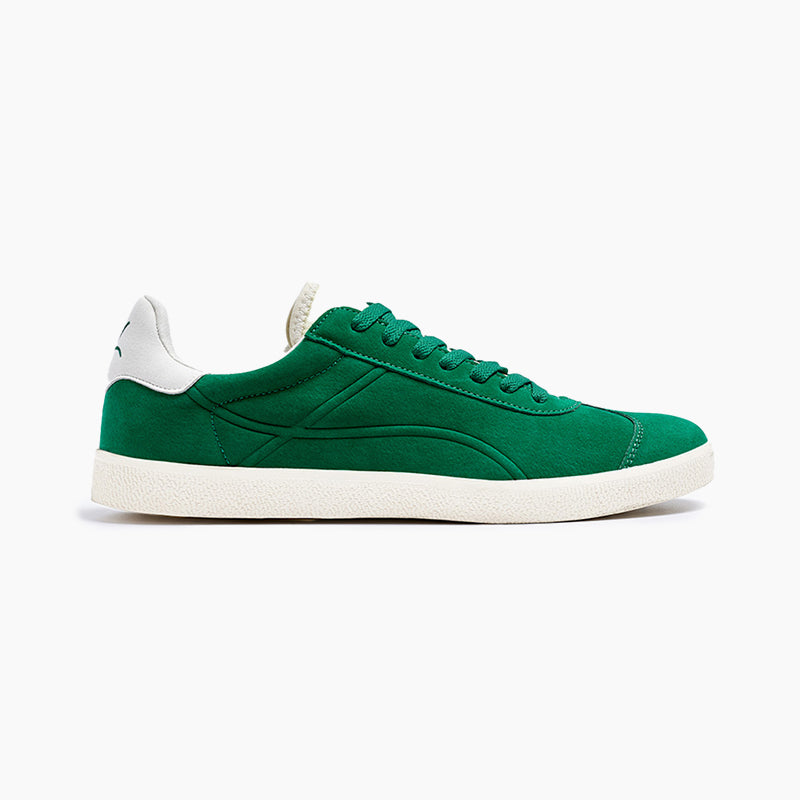


 The Sport Bag
The Sport Bag
 Circuit Shirt
Circuit Shirt
 Socks - Pack of 8
Socks - Pack of 8
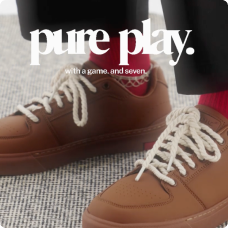 Nova Play
Nova Play





